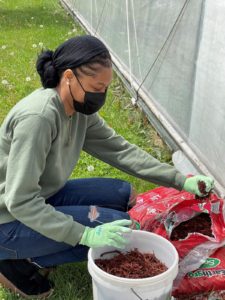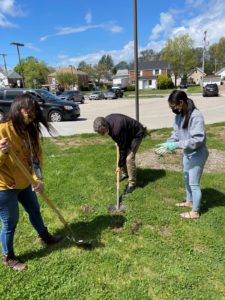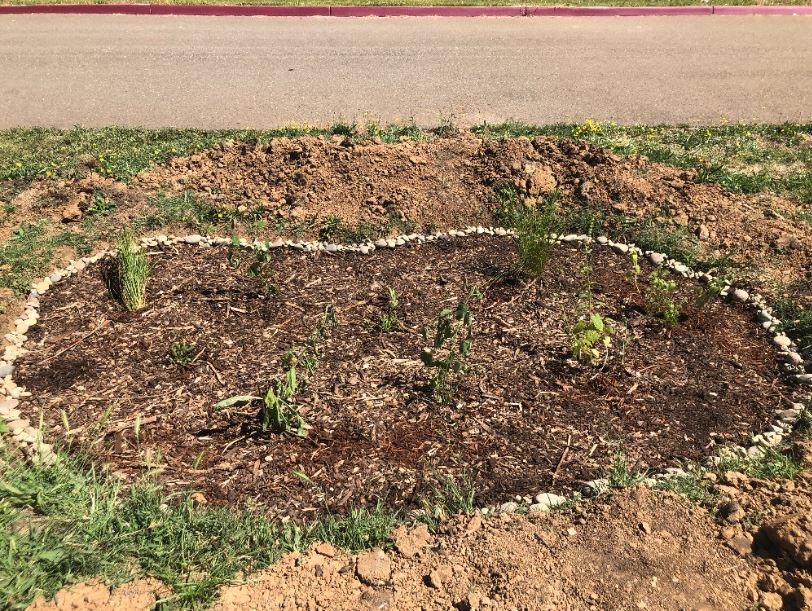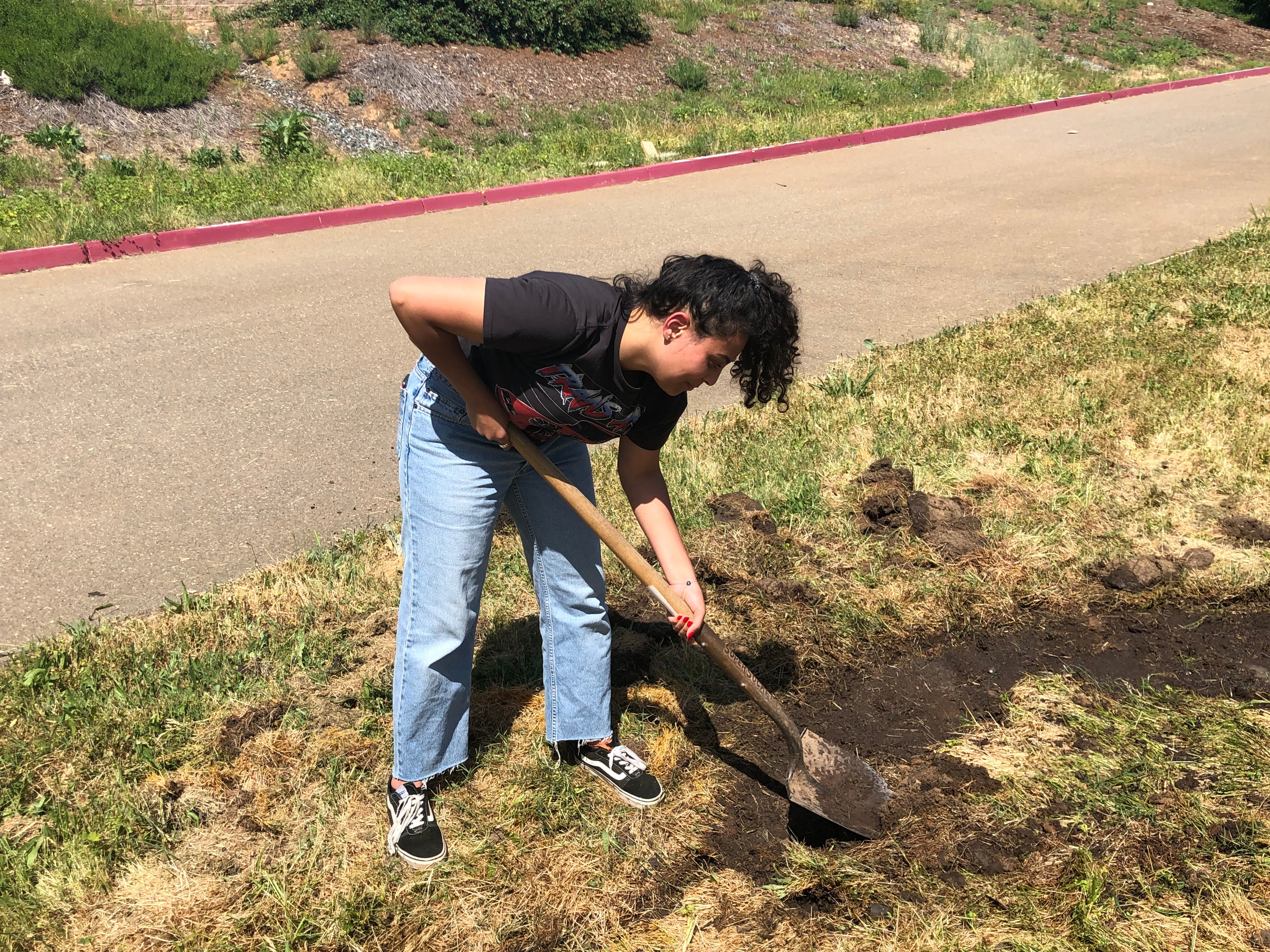2021, Sacramento, CA, USA
In an effort to promote water-wise landscaping while providing a biodiverse habitat for local birds, Grant High School students Alex Thao and Harmony Xiong designed a garden project which included several different drought-tolerant species that would provide nectar and food sources for species such as Anna’s hummingbird and Western Meadowlark. In addition, their design placed the garden near the outflow of a downspout off the roof, thus utilizing and slowing the flow the storm water. The original design proposed the garden in Harmony’s yard, but they were unable to build it there. While Harmony and Alex remained in distance learning, their classmates, Brianna Garcia and Alexander Martin helped find a place at school that was quite suitable and put in the plants, which included a Crape Myrtle tree, several Salvia species and bunch grasses. The students also plan to add signage to the garden to educate others on campus about the plantings and their benefits. This is a great example of students working together to accomplish a project despite the circumstances of COVID-19.








 2019, Sacramento, California, USA
2019, Sacramento, California, USA Isa identified some narrow spaces on campus that were suitable and got approval to plant, but realized he could most efficiently use the space by adding a vertical element to his pollinator garden. By trellising some common pollinator friendly plants, he not only provided habitat, but also added to the aesthetics of his school campus—and hopefully will increase the productivity of the garden as well!
Isa identified some narrow spaces on campus that were suitable and got approval to plant, but realized he could most efficiently use the space by adding a vertical element to his pollinator garden. By trellising some common pollinator friendly plants, he not only provided habitat, but also added to the aesthetics of his school campus—and hopefully will increase the productivity of the garden as well!